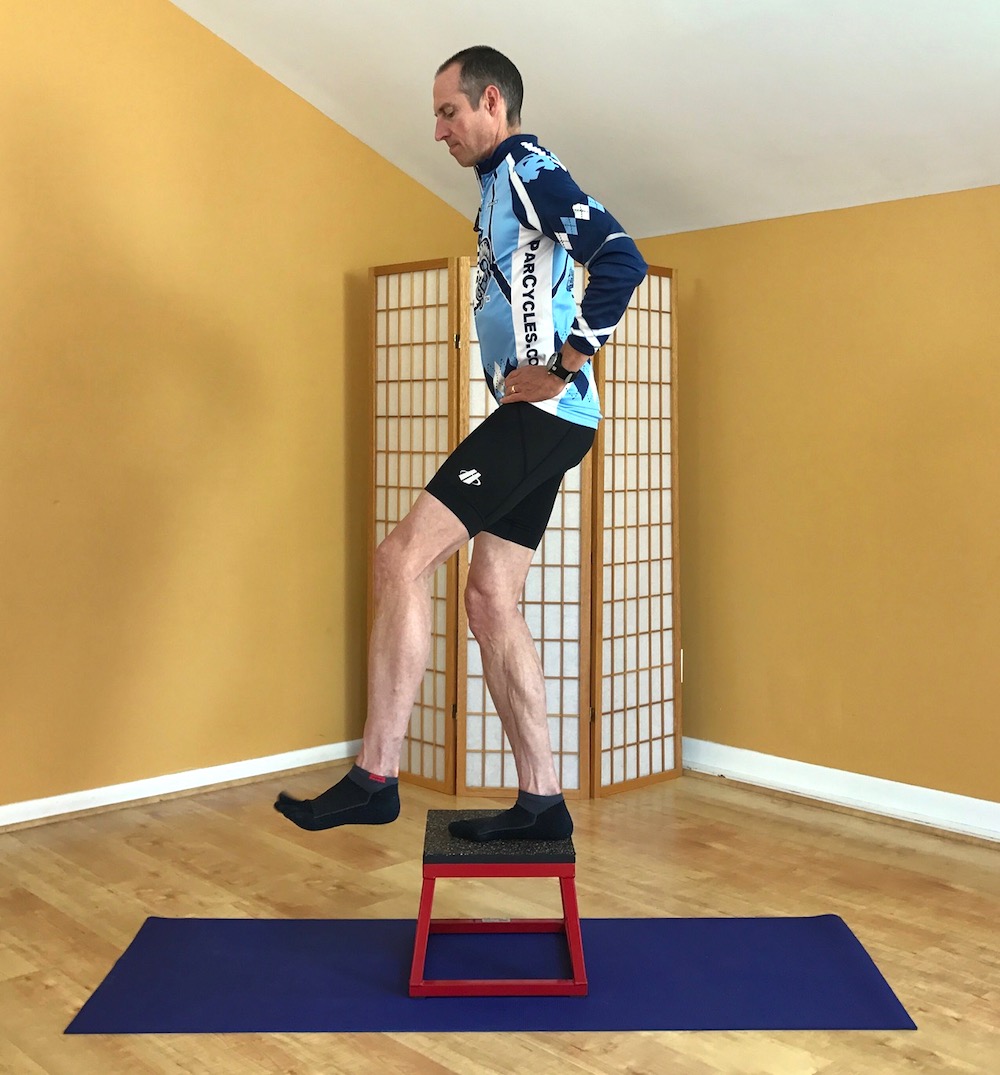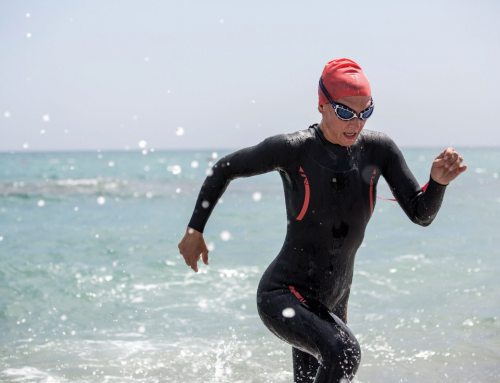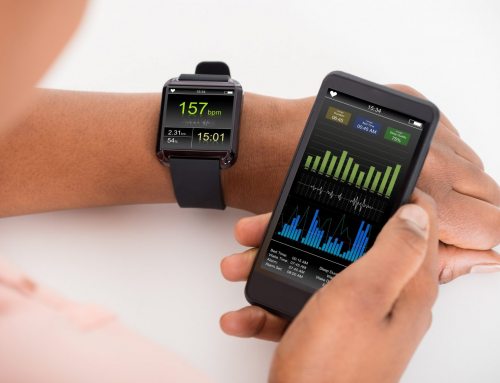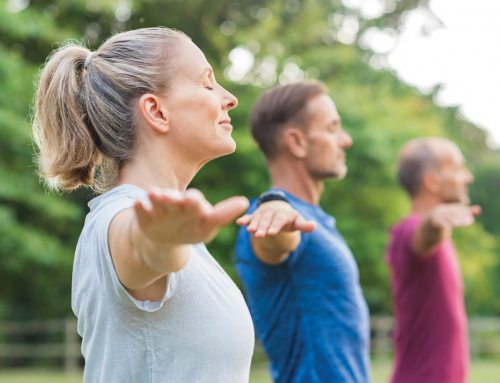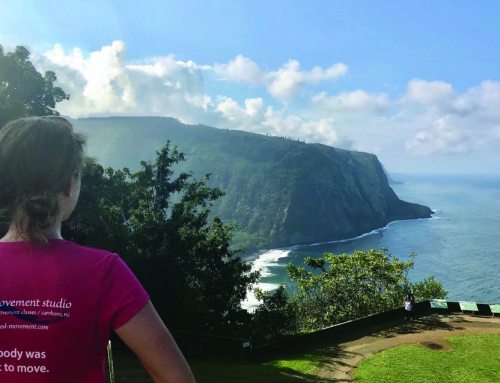By Brian Beatty
Efficient motion is critical to cycling performance. This article offers a way to refine your own ‘body spin scan’ skill and improve speed, power, and performance on the bike through increasing your pedaling efficiency.
Applying consistent, even force to the pedal is key. You can hear an efficient pedal stroke listening to the sound of your tires on the road. Spinning smooth circles with the legs yields a smooth, even whirring sound. An uneven sound indicates uneven pressure and potential loss of efficiency.
Though physically demanding, cycling can be biomechanically forgiving thanks much to the fact that your motion is assisted by a beautiful machine! Uneven leg motion and pelvis or core instability can be hidden, but effort spent covering up or compensating for inefficiencies rob power from the pedal stroke. A coordinated leg effort should yield an even push forward and down with a smooth transition to pulling back and up. Too often it becomes just pushing down (“mashing”) and then sacrificing the power of one leg to lift the weight of the other leg on the back part of the stroke.
Having a framework to connect your body to the bike can help focus areas for self-assessment. The hip joints work like the bottom bracket: the sockets of the pelvis are stable like the frame, while the ends of the femurs spin in the sockets. The hip joint spin determines the position of the knee. The knee is a hinge linkage of the leg that provides leverage. It allows the legs to function like the crank arms. A smooth circular path of the knee in space allows the quadriceps and hamstrings to generate powerful movement of the foot. The ankle correlates to the pedal spindle. The changing ankle position allows the foot to orient to the pedal for maximal force during the push and pull.
THE “BODY SPIN SCAN”
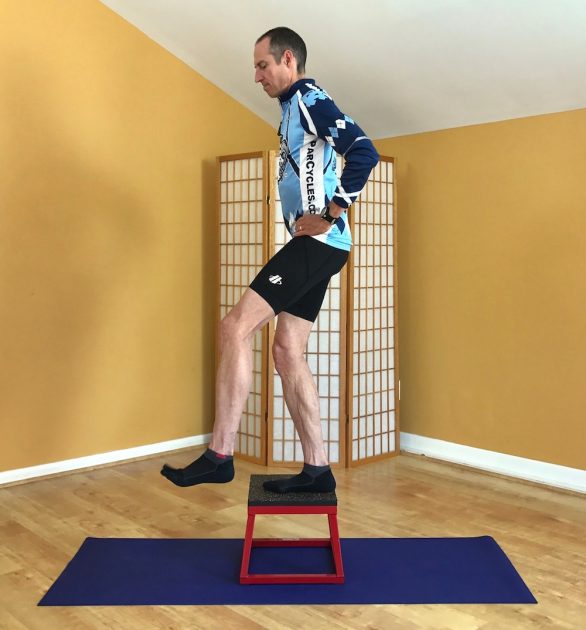 Try this exercise. Stand sideways on a step, one foot on the step, the other over the edge. Go into a slight squat on one side, holding the pelvis level. Then, ‘pedal’ the free leg in space. As precisely as you can, make the circle with the foot in the same circumference as your bike’s pedal path. The circle should be the same distance forward of your hip joint as your pedals would be when on your bike. Go slowly and be as precise as possible in creating the circle with the ball of the foot.
Try this exercise. Stand sideways on a step, one foot on the step, the other over the edge. Go into a slight squat on one side, holding the pelvis level. Then, ‘pedal’ the free leg in space. As precisely as you can, make the circle with the foot in the same circumference as your bike’s pedal path. The circle should be the same distance forward of your hip joint as your pedals would be when on your bike. Go slowly and be as precise as possible in creating the circle with the ball of the foot.
As you do the exercise, in succession, bring your attention to each joint of the spinning leg. Notice the path each joint makes in space. Is your hip stable? Does your knee form a smooth circle without wobbling to side? Does your foot align under your knee? Does your ankle change with your knee angle so that your foot holds even contact with the imaginary pedal? Practice on both sides. Take note of places where it is harder to sense what is happening in each of three joints or places where it is harder to control the smooth shape of the circular motion. Make adjustments as needed, keep practicing, and remember where your weak spots are so you can begin to notice and correct them on the bike. Small differences and adjustments found in this movement can have a huge impact over the thousands of circles you pedal on a ride.
Once you have this basic exercise down, try coordinating the standing leg, lifting and lowering your body in a squat while the other leg pedals. Move up and down gently, matching the timing and distance of the squat to the circle circumference size and timing of the “cycling” leg. For another progression and added challenge, see this month’s core corner.
If you have a stationary bike trainer, you can do the same exercise as a single leg drill – moving slowly with minimal resistance. Once you have mastered this, add some resistance and work through it again. Then go enjoy a ride and happily apply what you have discovered.
# # #
Brian Beatty, PT works in Carrboro at Balanced Movement Studio and rides wherever he can. More detailed videos of these concepts and exercises can be found online by searching for ‘cycling resources’ on our website, www.balanced-movement.com.


